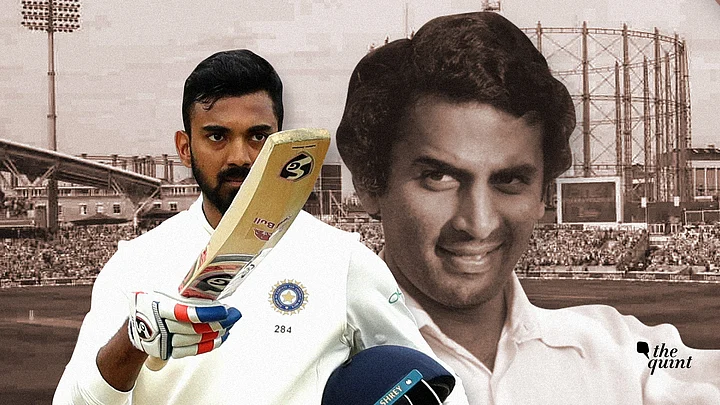The last day of the Oval Test featuring England and India was so eerily similar to the one that played out at same venue between the same opponents nearly four decades ago. The only thing dividing the two matches was the result.
In 1979, the Indian side were touring England, immediately after the second World Cup. Like the current lot, the 1979 side was also trailing – albeit 0-1 – but had an opportunity to draw the four-match series unlike the current side that went into the final Test with a score line of 1-3.
If in 1979 it was Sunny Gavaskar who was on the cusp of making history, 39 years later it was KL Rahul who had plans to rewrite the record books.
The Setting
On both occasions England had an edge going into the final day of the final Test.
On 11 September, when KL Rahul and Ajinkya Rahane walked into the field everyone gave the Indian unit maximum two hours, which was till lunch to continue their survival act.
Alastair Cook playing his final Test, decided to go out on a high as he struck his 33rd century. Cook (147) and skipper Joe Root (125) weaved a 259-run stand to set India a target of 464 runs.
India, who were yet to breach the 200-mark in the fourth innings in the series, had a wobbly start yet again, losing three wickets for just two runs. Skipper Virat Kohli, for the first time in this series, went back without troubling the scorers.
At the end of Day 4, India were looking down the barrel at 58/3. Rahul and Rahane were stranded at the crease and needed to conjure the greatest trick in the book if India wanted to avoid another loss in the series.
Meanwhile, in 1979, England may have had the upper hand, but India made sure going into the final day they were better placed than the 2018 side were.
A century from Geoffrey Boycott and last-minute antics from debutant David Bairstow enabled England to declare on the fourth afternoon and set India a target of 438.
India, who were looking for a draw, started decently. At the close of play on Day 4, the pair of Gavaskar and Chetan Chauhan took India to 76 for 0, needing 362 runs on the final day to level the series.
The Heroes
If Rahul was the star in the lost cause for India at the Oval earlier this week, Gavaskar battled it out to literally save the day for India at the same venue in 1979.
Rahul, who hadn’t done well for himself till his final innings of the India-England series, went on to make 149 runs in 224 balls. This is the second highest score by an Indian in the fourth innings of a Test match.
The record for the highest score by an Indian in the fourth innings belongs to Sunil Gavaskar, who scored a 221 in the 1979 match.
Gavaskar and Chauhan picked up from where they had left the previous evening. The pair were off to a sluggish start but looked solid in their defence, scoring only 93 runs in the first session of the day.
Four years back only India had chased down a 400-plus score in the Caribbean and with Gavaskar bringing up his double century another record-breaking chase was on the cards.
India needed only 76 runs in the last 12 overs. But After 8 hours and 43 minutes, which included 443 balls, it was Botham who got the prized scalp of Gavaskar. Finally, after 221 runs Gavaskar went back to the pavilion.
However, by that time, it looked like India had not only saved the Test but were also within striking distance of a win.
The Aftermath
How Gavaskar’s wicket made sure England don’t lose the Test, Rahul and Rishabh Pant’s wickets brought the English side closer to their fourth win in the series.
Rahul and Pant, who also scored centuries in the innings, batted their hearts out. Pant played his natural game to bring up his maiden century. Till Tea on Day 4 of the Oval Test, there was a belief that India might do the unthinkable.
But post-Tea, in the span of three overs, both Rahul and Pant (114) gave away their wickets. And after that it was only a matter of few balls as the last three wickets fell for 17 runs and despite rejuvenated hope, India couldn’t avoid a 1-4 loss.
But things were a lot brighter in 1979 at the Oval for India. Though there were some hiccups, India managed to salvage a draw and didn’t let Gavaskar’s effort go in vain.
Gundappa Viswanath had kept the chase alive with 15 runs from 11 balls before he got dismissed. Ian Botham was a changed bowler since Gavaskar’s departure. He removed Yajurvindra Singh and Yashpal Sharma in successive overs, and his final four overs brought him a crucial 3 for 17.
India needed 15 runs with two wickets in hand in the last over. Courtesy the penultimate pair India settled for a draw as the captains agreed on a draw with one delivery remaining and nine runs required.
(At The Quint, we question everything. Play an active role in shaping our journalism by becoming a member today.)
